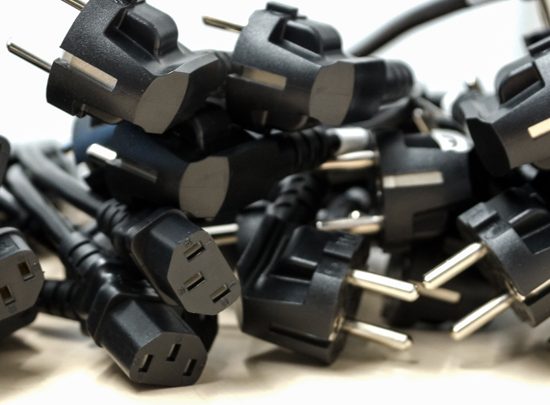
Its ELECTRIC, No Not The Song!
Super capacitors
Capacitors store their energy in an electrostatic field. They consist of two electrodes (plates) of opposite polarity separated by a dielectric or electrolyte. The capacitor is charged by applying a voltage across the terminals which causes positive and negative charges to migrate to the surface of the electrode of opposite polarity.
The capacitance is a measure of the charge stored for a given electric potential between the electrodes. Farad is a unit of capacitance named after the English physicist Michael Faraday. For a parallel plate capacitor the capacitance is proportional to the area of the plates and the permittivity of the dielectric separating them and inversely proportional to the distance between the electrodes.
The supercapacitor, also known as ultracapacitor or double-layer capacitor, differs from a regular capacitor in that it has a very high capacitance. Engineers at General Electric first experimented with the electric double-layer capacitor, which led to the development of an early type of supercapacitor in 1957. There were no known commercial applications then. In 1966, Standard Oil rediscovered the effect of the double-layer capacitor by accident while working on experimental fuel cell designs. The company did not commercialize the invention but licensed it to NEC, which in 1978 marketed the technology as supercapacitor for computer memory backup. It was not until the 1990s that advances in materials and manufacturing methods led to improved performance and lower cost.
The modern supercapacitor is not a battery per se but crosses the boundary into battery technology by using special electrodes and electrolyte. Several types of electrodes have been tried and we focuse on the double-layer capacitor concept. It is carbon-based, has an organic electrolyte that is easy to manufacture and is the most common system in use today.
High power versions of supercapacitors can provide high instantaneous power but they have limited capacity. They are suitable for applications which require a short duration power boosts such as UPS systems which need fast take over of substantial electrical loads for a short period until back up power units, such as rotary generators or fuel cells, have switched on and reached their full output. Similarly they can be used to provide an instantaneous power boost in Electric and Hybrid vehicles.
Cell phones and digital cameras will drive adoption in electronics. Multimedia cell phones and autofocus cameras both impose high pulse power demands that batteries and conventional capacitors are poorly equipped to provide. This will spark supercapacitor growth in consumer electronics from $122 million in 2008 to over $550 million in 2014.
Transportation will drive large supercapacitor applications. It takes a lot of power to get a large bus or truck moving, which will fuel demand for most large supercapacitor applications. Wind turbines are another key opportunity, although relatively high supercapacitor prices will limit adoption rate. Overall, large storage applications are expected to expand from $86 million last year, to over $320 million in 2014.
http://batteryuniversity.com/learn/article/whats_the_role_of_the_supercapacitor
http://www.illinoiscapacitor.com/pdf/papers/supercapacitors.pdf
